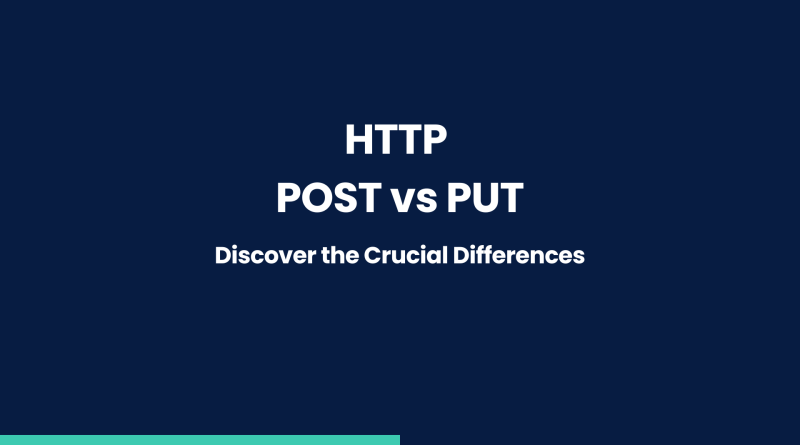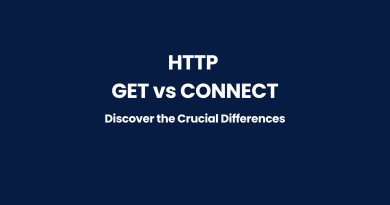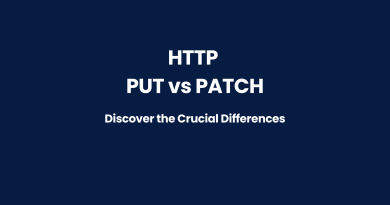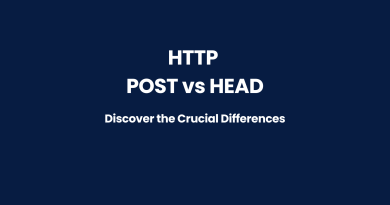HTTP POST vs PUT: Discover the Crucial Differences
As developers, understanding the different HTTP methods is crucial for effective communication between clients and servers. HTTP methods, also known as HTTP verbs, define the actions that can be performed on a resource, such as retrieving, creating, updating, or deleting. Among these methods, POST and PUT are two of the most frequently used and often misunderstood. In this blog post, we will explore the differences between these methods, their key characteristics, and how to choose the right one for your API and application needs.
Definition and purpose of HTTP POST
The POST method is an HTTP verb used to submit data to a server for processing or to create a new resource. When a client sends a POST request, it provides the server with the necessary data, often in the form of a payload, that the server will process and utilize to create a new resource, such as a new user account, a comment on a blog post, or a new data entry in a database.
The primary purpose of the POST method is resource creation, but it can also be used for server-side processing tasks that do not necessarily involve creating a new resource. For instance, a POST request could be used to process data uploaded by a user, like resizing an image or converting a document to a different format, without creating a new resource on the server.
Definition and purpose of HTTP PUT
The PUT method is another essential HTTP verb, primarily used for updating or replacing an existing resource on the server. When a client sends a PUT request, it provides the server with a new representation of the target resource, which the server then uses to update or replace the existing resource.
The primary purpose of the PUT method is to update existing resources on the server. It is important to note that PUT is not designed for creating new resources. When using PUT, the client must specify the exact resource it wants to update, meaning that the resource’s identifier (e.g., a URL or an ID) must already exist on the server. If the specified resource does not exist, the server might either create a new resource with the given identifier or return an error, depending on the server’s implementation.
Comparing POST and PUT
| Comparison Aspect | POST | PUT |
|---|---|---|
| Idempotency | Non-idempotent: Repeated requests can have different results/side effects. | Idempotent: Repeated requests have the same effect as a single request. |
| Purpose | Primarily for creating new resources. | Primarily for updating existing resources. |
| Server-side processing | Can be used for processing data and creating resources. | Focuses on replacing the target resource with the provided data. |
| Safety | Non-safe: Can modify server state and resources. | Safe: Does not modify server state or resources beyond intended updates. |
Idempotency
Definition and importance
Idempotency is a fundamental concept in HTTP that refers to the property of an operation where performing it multiple times has the same effect as performing it once. Understanding the idempotent nature of HTTP methods is important because it can impact the reliability and predictability of your web application, particularly when dealing with network issues, retries, or user errors.
POST as non-idempotent
The POST method is non-idempotent, meaning that submitting the same POST request multiple times can have different results or side effects. For example, if you send a POST request to create a new user account with the same data multiple times, the server might create multiple user accounts with the same information. This non-idempotent behavior can lead to duplicate resources or unintended side effects, making it crucial to handle POST requests carefully.
PUT as idempotent
On the other hand, the PUT method is idempotent. When you send a PUT request to update a resource multiple times with the same data, the end result will be the same as if you sent the request only once. This idempotent property ensures that the server maintains the desired state of the resource, even if the request is repeated, making PUT a more predictable and reliable method for updating resources.
Resource creation and updates
POST for creating new resources
The primary purpose of the POST method is to create new resources. When using POST, the client sends data to the server, which processes the data and generates a new resource with a unique identifier. This makes POST the ideal choice when you need to create new entries or resources in your web application.
PUT for updating existing resources
Conversely, the PUT method is designed to update existing resources on the server. When using PUT, the client sends a new representation of the resource to the server, which then replaces the existing resource with the provided data. This makes PUT the preferred method for modifying or updating resources, ensuring that your application’s data remains accurate and up-to-date.
Server-side processing
POST for processing data and creating resources
In addition to creating new resources, the POST method can also be used for server-side processing tasks that do not necessarily involve resource creation. For example, POST can be used to process data sent by the client, such as resizing an image or validating form input, before creating a new resource or returning a response.
PUT for replacing the target resource
The PUT method, on the other hand, focuses on replacing the target resource with the data provided by the client. This makes PUT well-suited for updating resources, as the server simply replaces the existing resource with the new representation provided by the client.
Safety and idempotence
POST as a non-safe method
Safety in HTTP refers to the property of a method that does not modify the state of the server or its resources. The POST method is considered non-safe because it can create new resources or cause side effects on the server. This means that using POST carries the risk of unintentional changes or duplication, especially when dealing with retries or network issues.
PUT as a safe and idempotent method
In contrast, the PUT method is both safe and idempotent. Since it is designed to update existing resources and has no side effects when called multiple times with the same data, PUT offers a more predictable and reliable way to modify resources on a server. This makes it an excellent choice for maintaining data integrity and ensuring a consistent user experience in your web application.
Choosing the right method: POST or PUT
Factors to consider
When deciding between the POST and PUT methods for your web application or API, it is essential to consider several factors to ensure the appropriate method is chosen for a given task. These factors include:
Type of operation (creating vs updating)
Consider whether the action you want to perform involves creating a new resource or updating an existing one. If you need to create a new resource, POST is the suitable method. Conversely, if you need to update or modify an existing resource, PUT is the ideal choice.
Idempotency requirements
Think about the potential impact of repeated requests or network issues on your application. If it is crucial for your application to avoid unintended side effects or duplication of resources, you might want to opt for the idempotent PUT method when updating resources. If idempotency is not a major concern, and you need to create new resources, the non-idempotent POST method can be used.
Safety and data integrity
Consider the importance of maintaining data integrity and ensuring a consistent user experience in your application. If safety is a priority, you might lean towards the PUT method, as it is both safe and idempotent. However, if you need to create new resources or perform server-side processing, you might need to use the non-safe POST method.
Examples
To better understand when to choose between POST and PUT, let’s explore a few scenarios:
Deciding between POST and PUT in different scenarios
- User registration: When a user signs up for an account on your website, you need to create a new user resource with their information. In this case, the
POSTmethod is the appropriate choice for handling user registration. - Editing a blog post: If a user wants to edit an existing blog post, you need to update the existing resource with the new content provided by the user. In this scenario, the
PUTmethod is the ideal choice, as it is designed for updating resources. - Uploading and processing an image: If a user uploads an image to your application and requests a specific image manipulation, such as resizing or cropping, you might need to process the image data before creating a new resource. In this case, the
POSTmethod is suitable, as it can handle both server-side processing and resource creation.
Pros and cons of each method
- POST
- Pros: Ideal for creating new resources and server-side processing, can handle a wide range of tasks.
- Cons: Non-idempotent, non-safe, can lead to unintended side effects or duplicate resources.
- PUT
- Pros: Idempotent and safe, designed for updating resources, ensures data integrity and a consistent user experience.
- Cons: Not suitable for creating new resources, requires an existing resource identifier for updates.
See Also
HTTP POST Method: Comprehensive Guide
HTTP PUT Method: Comprehensive Guide
HTTP DELETE Method: Comprehensive Guide
HTTP HEAD Method: Comprehensive Guide
HTTP OPTIONS Method: Comprehensive Guide



